Deze pagina is momenteel niet beschikbaar in uw taal. U kunt met behulp van Google Translate een automatische vertaling bekijken. Wij zijn niet verantwoordelijk voor deze dienstverlening en het vertaalresultaat is niet door ons gecontroleerd.
Heeft u meer hulp nodig, neemt u dan contact met ons op.
neuromate® stereotactic robot for neurosurgery
The neuromate robot provides a consistent, accurate and repeatable platform for stereotactic neurosurgery. Discover how the neuromate can assist you in a wide range of neurosurgical applications.
Why choose the neuromate robot?
The neuromate stereotactic robot for neurosurgery provides a platform solution for therapy delivery as well as diagnostic procedures. The system can be used in a range of neurosurgery applications such as deep brain stimulation (DBS), neuroendoscopy, stereoelectroencephalography (SEEG), biopsies and many applications requiring stereotactic delivery.
Through the use of the neuromate robot we aim to enhance the safety and cost-effectiveness of procedures whilst improving patient outcome through accurate delivery of implantable devices and therapies.
To find out more information and speak to one of our experts, please fill out our contact form.
Watch the neuromate robot in action
As seen in the video above, using the neuromate robot for procedures such as SEEG can optimise procedure time. A reduction in procedure time can improve patient comfort and reduce the risk of infection.
The robot totally changes how we approach insertion of SEEG electrodes. It is noticeably faster and more accurate than the previous system. In addition, it allows us to plan trajectories previously impossible with a standard frame, making surgery safer and more accurate.
Prof. David Steven
Neurosurgeon
London Health Sciences Centre, Ontario, Canada
What are the benefits of robotic stereotactic neurosurgery?
The neuromate offers a range of benefits when assisting with stereotactic neurosurgery procedures.
- Provides consistent, rapid and precise targeting in stereotactic procedures.
- The robot helps with the transition to minimally invasive procedures.
- Can be used with a stereotactic frame, or in frameless mode for reduced patient trauma.
- The robotic workflow limits the need for manual manipulation, reducing potential human errors and aiding patient safety.
- Compatible with procedures using both general and local anaesthesia.
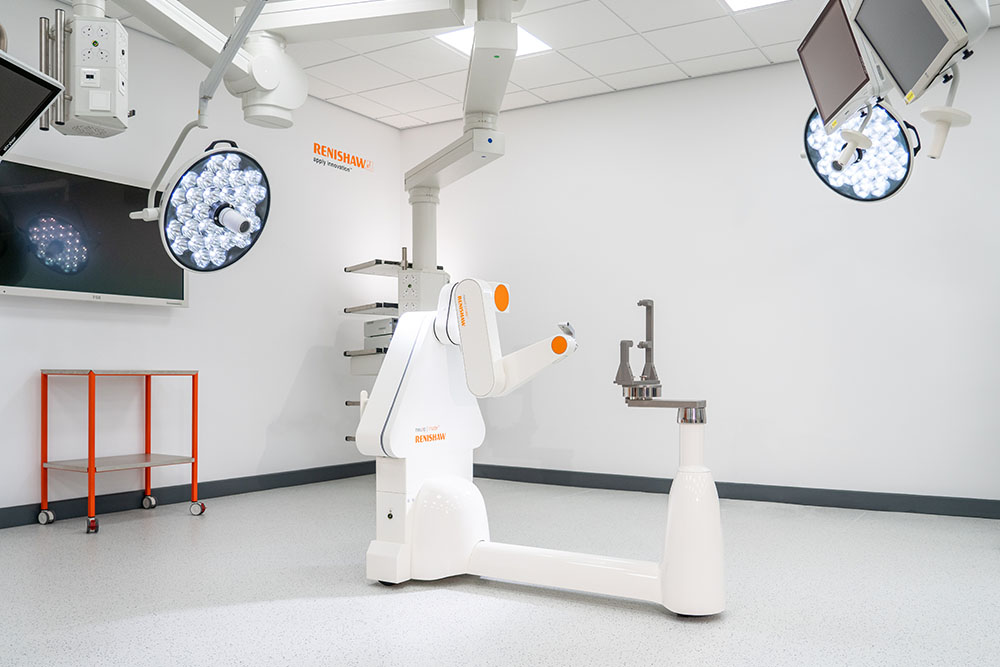
The neuromate is part of our range of neurosurgery products and system that aid in the treatment of multiple neurological conditions.
What's included in the neuromate system?
A range of accessories are included in the standard installation of the neuromate system.
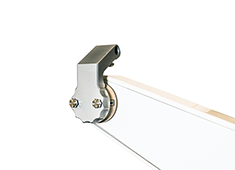
Standard tool holder
This is a universal holder featuring a guide into which standard neurosurgical instruments such as drills, guide tubes, biopsy needles and catheters can be inserted.
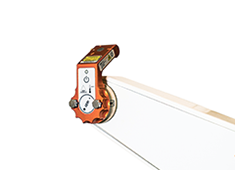
Laser tool holder
The laser tool is used to check the patient registration and to mark the entry points on the patient head before surgery. It is mounted on the neuromate arm in the same way as a standard tool holder.
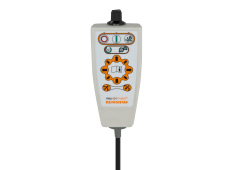
Remote control
The remote control enhances safety by enabling the control of the robot to be placed in the hands of the user. With the endoscopy option, the remote control allows surgeons to navigate the robotic arm within a volume pre-defined during planning.
Frameless options available for the neuromate
Renishaw offers a range of frameless options for the neuromate system.
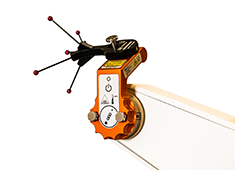
neurolocate™ registration module
neurolocate patient registration module connects to the neuromate laser tool and enables intra-operative CT registration, without the need for bone or skin anchored fiducials.
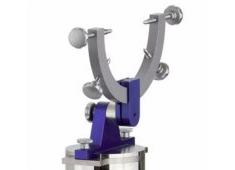
Head holder and attachments
This is composed of a half-ring, six pins and a clip to fix the half-ring onto the attachment. The head holder must be fixed to the base of the neuromate.
Additional options for the neuromate
Renishaw offers additional options for the neuromate system, including frame-based options and consumables.
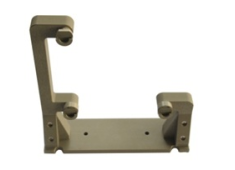
Frame attachment
The frame attachment is designed to fix your usual stereotactic frame to the neuromate. Models exist for a range of stereotactic frames.
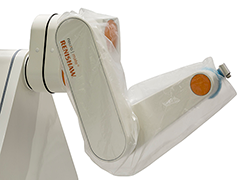
Sterile drapes
To ensure a sterile environment, surgical drapes are available for both the remote control and robotic arm.
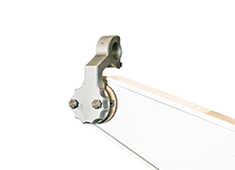
Endoscopic module1
This specific instrument holder has been designed to receive most types of endoscope.
neuroinspire™ neurosurgical planning software
The neuromate is supplied with our neurosurgical planning software. This software is also designed to control the robot during surgery.
Other stereotactic adaptations
We are aware that technical requirements in the neurosurgical operating room are changing fast. If you plan to acquire or are using new technologies, our engineering team is ready to work with you to integrate these into your neuromate surgical procedure.
Please contact your local sales team to find out how we can help you.
Please note that not all Renishaw products, their fields of application, relative accessories or combination thereof, are available in all countries.
Related publications
If you would like to find out more about our products used in a range of stereotactic procedures, please see our peer-reviewed library of publications.
Renishaw Neuro Solutions Limited — Legal and privacy notices. Click here